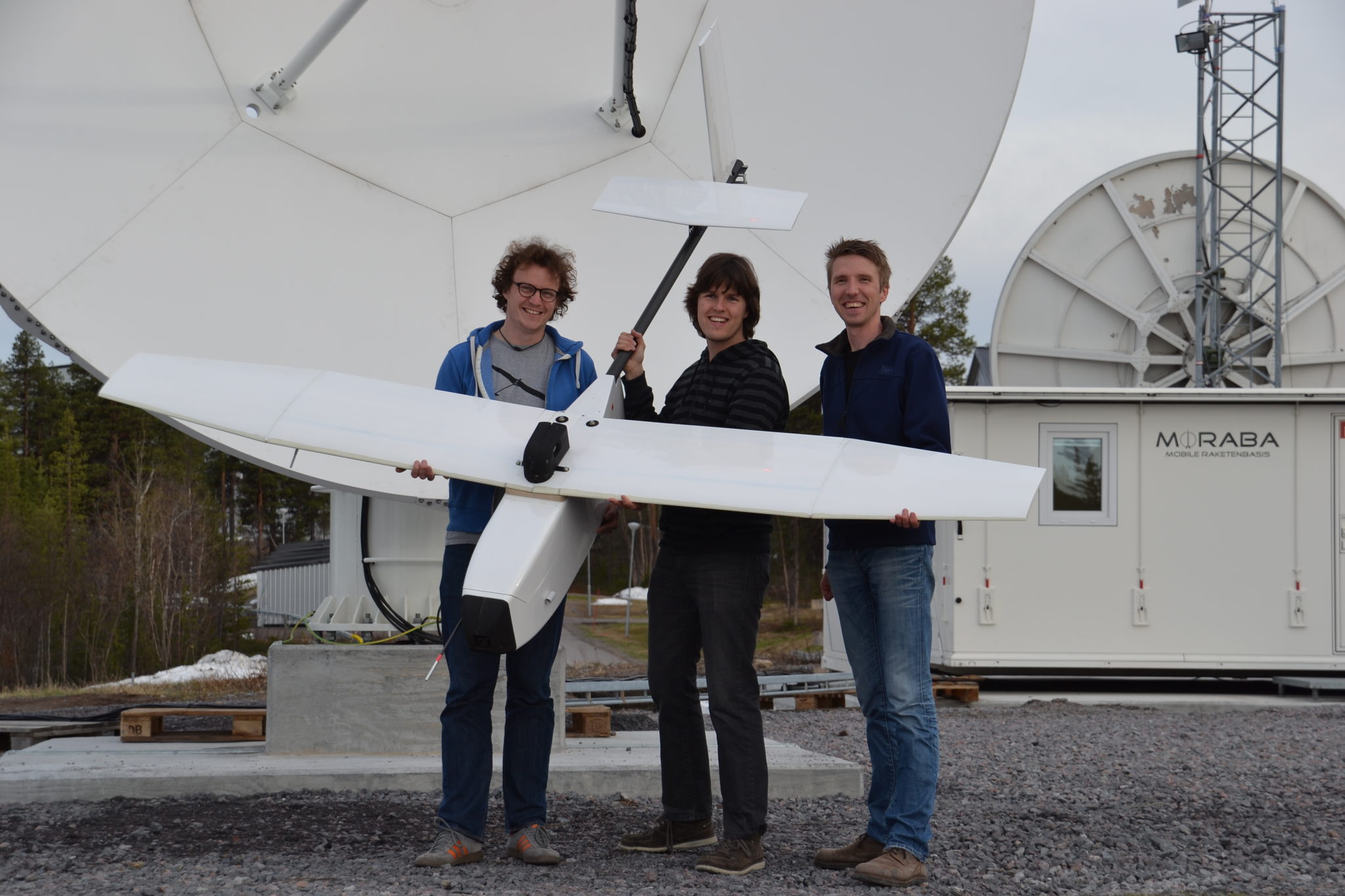This is the sort of thing T3 entrants get up to, well done!
HABLEG has a mass of 7kg, a wingspan of 3m and can carry an additional payload of up to 3kg. The flight was conducted at the rocket base ESRANGE in northern Sweden, where the glider was lifted to an altitude of 20km by means of a helium balloon. Upon release in the low density atmosphere, a central challenge was the transition from freefall to horizontal stratospheric flight. Having achieved this critical part of the mission, the plane was then automatically guided back to base while performing it´s test flight program. All characteristics of the plane could be tested and validated within the one hour glide phase.
Touch-down occurred less than 50m away from the launch site which makes it the first successful flight of this kind in Europe.
This is the most elegant HAB Glider launch I have ever seen!
http://www.suasnews.com/2015/07/37365/hableg-high-altitude-balloon-launched-experimental-glider/

Comments
Hi Dan,
it´s a custom design to fly well at 20km (think Re-number..) and to house the equipment well insulated.
What airframe is that? Custom?
Hi Nick,
at 20km the plane just flies faster (50-60m/s, 13m/s at ground level), and actually the control surfaces are more effective under these conditions!! We underestimated this effect a little bit which led to a roll movement you can see in the video. By using the live video feed and our GCS we could quickly handle the situation. So you loose some altitude for speeding up (and the drogue for not stalling) and then pull out.
Actually you can fly at even higher altitudes like NASA did: http://marsairplane.larc.nasa.gov/
Launch is the most critical part and many projects failed at that point. If you stall at 20km, you will free fall to aprox. 10km and probably recover there.
Marc, thanks for your comment. After glider detachment, at what altitude did your control surfaces become effective? I assume the air was too thin and the glider was in freefall until you were at an atmosphere with appropriate density?
Hi, nice to hear many people are interested in the topic.
Let me add some comments as one of the HABLEG crew members.
Flying from that altitude is a really great experience and a massive challenge. If you get the chance, go for it! Our flight was not only up 20km but the wind pushed the ballon to a distance of nearly 70km. Which is a general problem with ballons, of course. The tools at habhub.org are really great for predicting the path.
You must be confident your systems will work at the distance and altitude. We performed range tests (valley to mountain), thermal-vacuum testing, ground based test flying and a lot of simulations for both the systems and for crew training. We practiced situations like launch and stall and wrote down the procedures. A detailed checklist, tested in several rehearsals, brings everything to a smooth process.
In the end it comes down to waiting for a weather window and then it´s one shot...
Some information about the systems (for details, please ask):
The autopilot is a custom design we also use for other platforms. We added and modified the systems for the task. Geofencing and flight termination was requested by the range. Two redundant datalinks and an analogue video transmitter were on board. You can partly see the video receiver dish behind us in the picture above :-)
Jason, we know (and looked at) the other projects already performed, most in the US. Some provide interesting information. We just had another focus (research for high altitude planes) and to our knowledge were the first to be successful in Europe.
We hope to do more flights in the future.
Marc
I use RTTY for coms, also using Radiometrix radios, they are the bomb.
Acorn, other than temporary FAA clearance, I'm not too sure - I'm interested to learn if other glider release projects have been approved in the US.
Awesome Gary, we'll be sure to share design decisions and results. I'm working with a team from the Dallas Makerspace. The utimate goal is to have all the bells and whistles: FPV, telemetry, antenna tracker, and of course, a mini APRS transmitter for redundancy.
I'm also building one Nick, its a trend.
-
1
-
2
of 2 Next